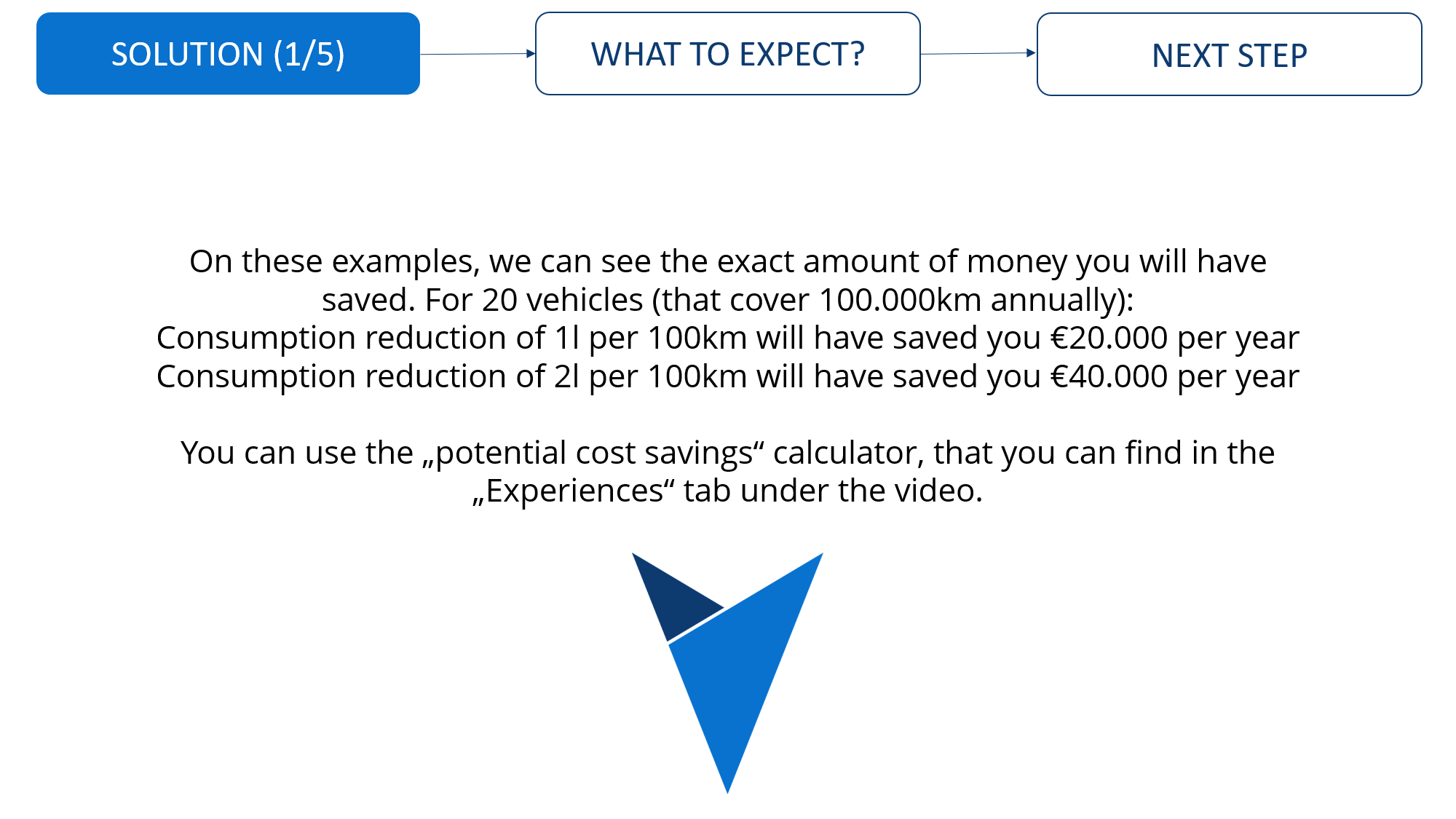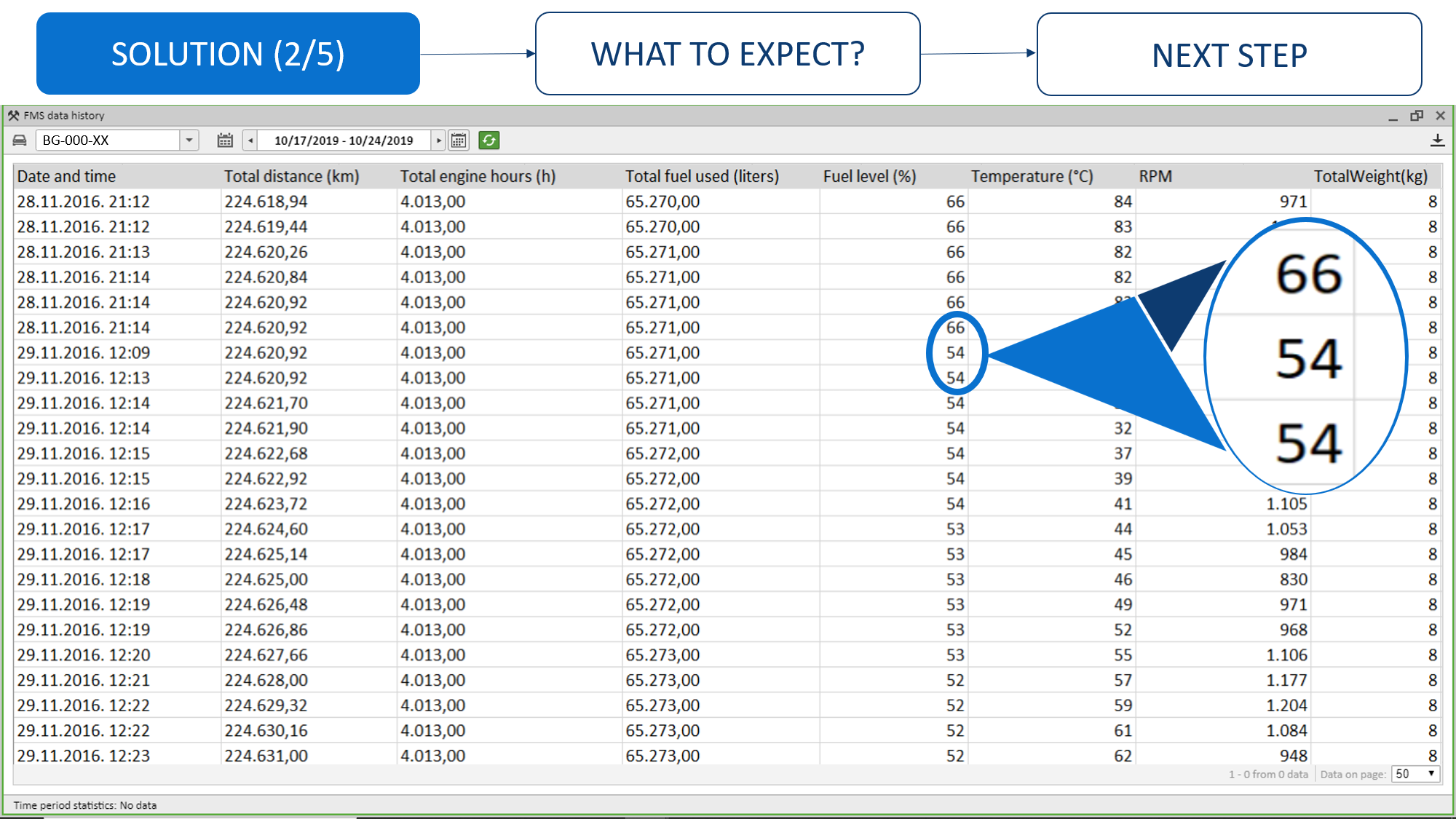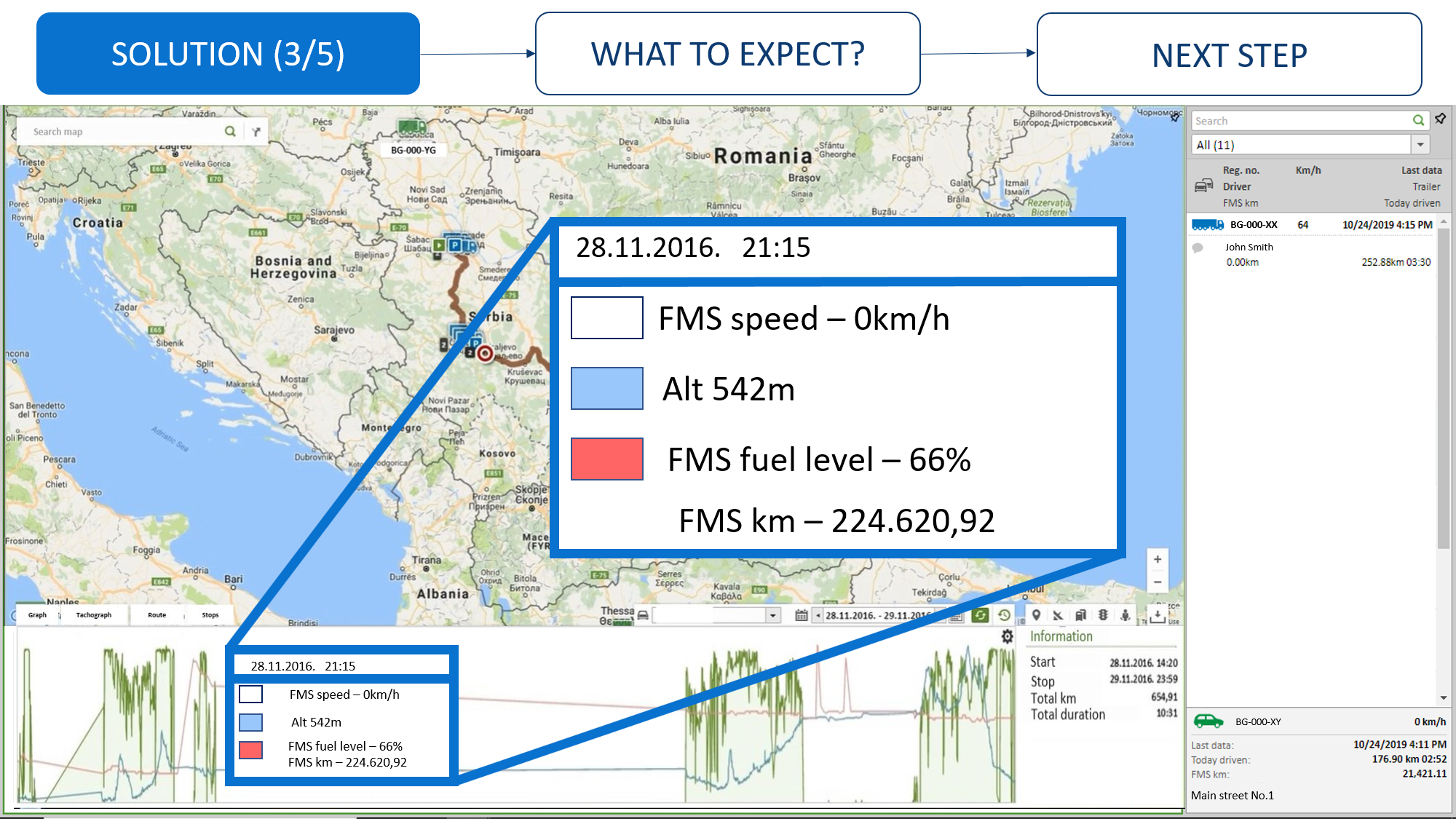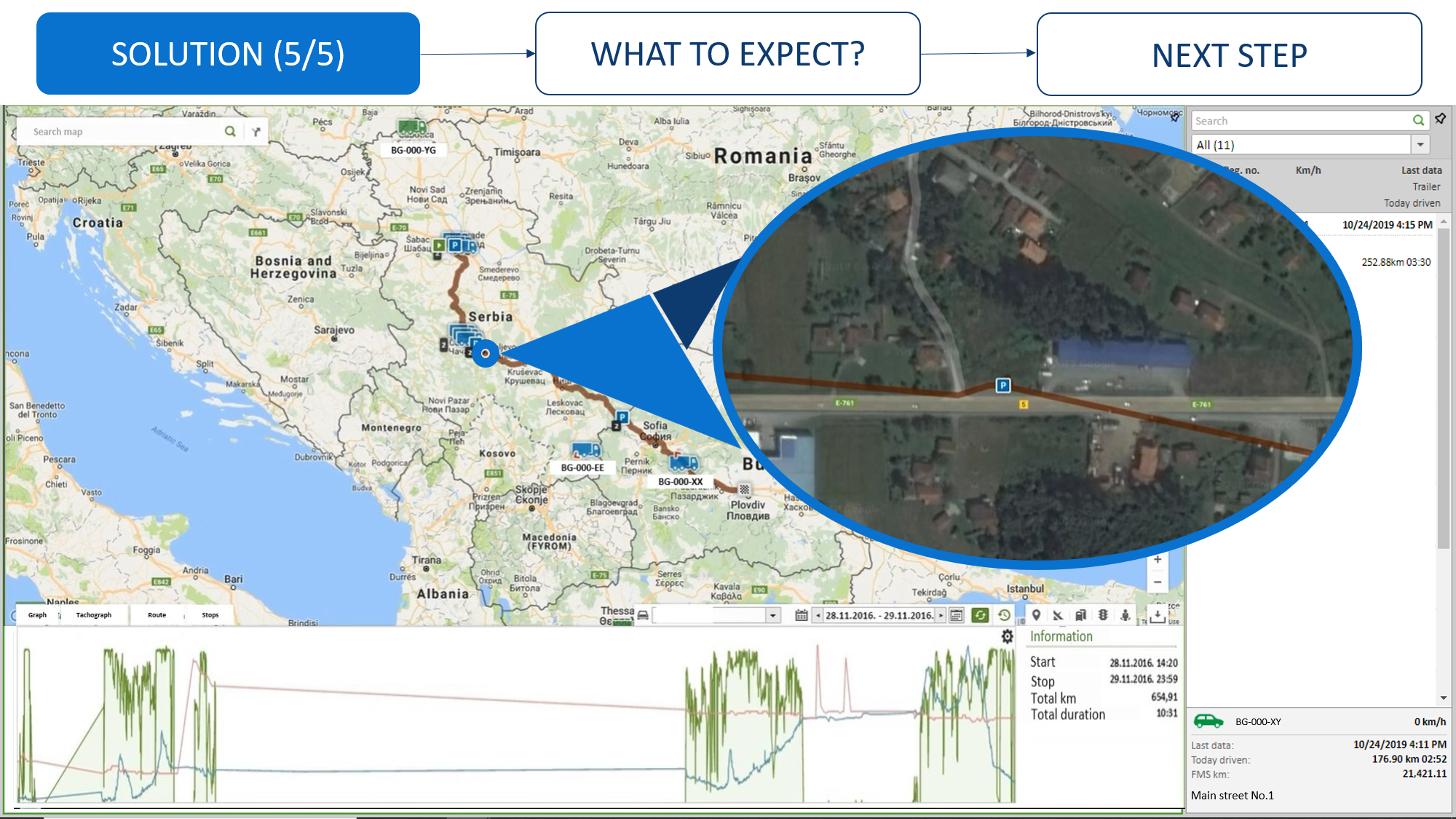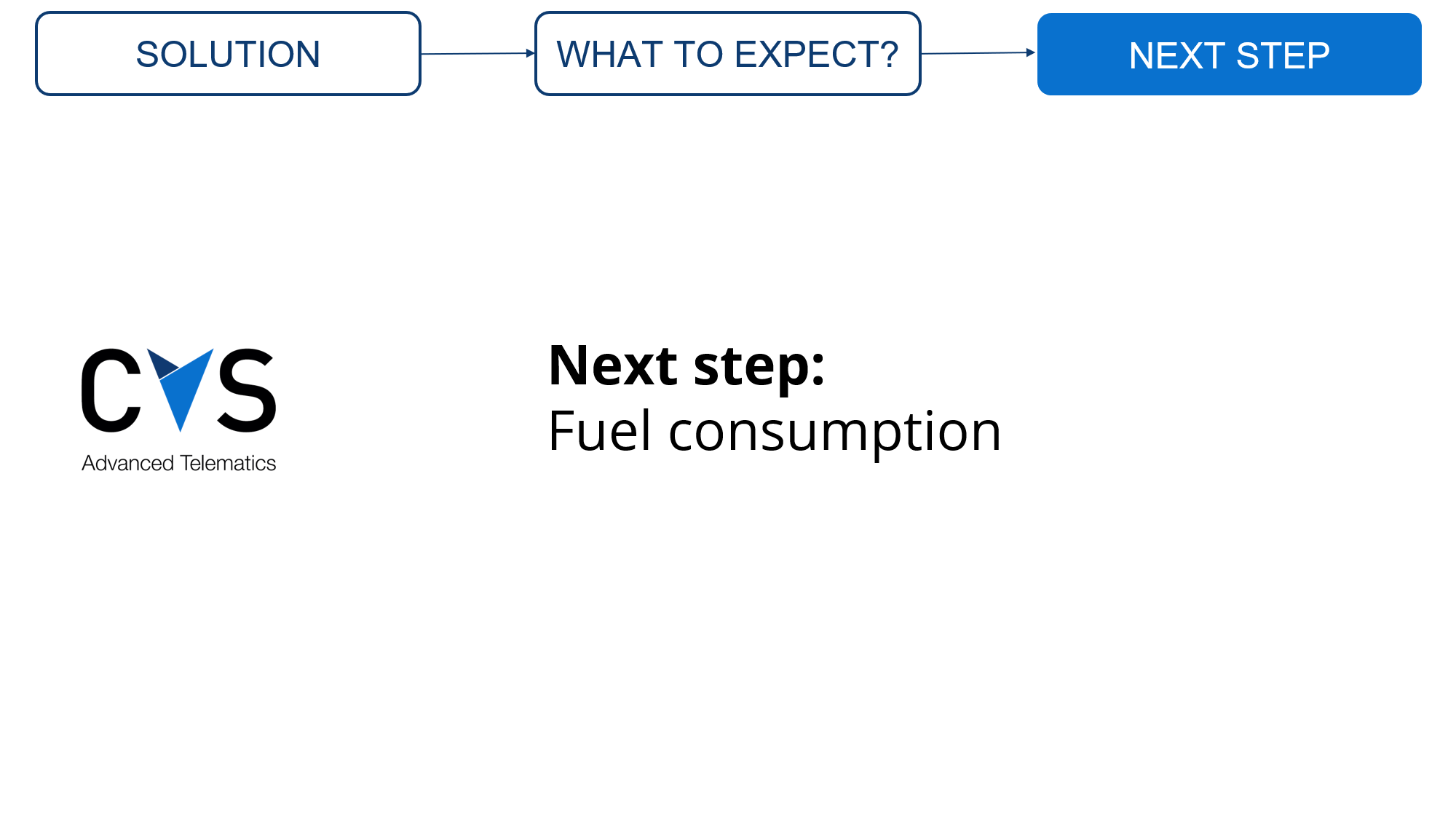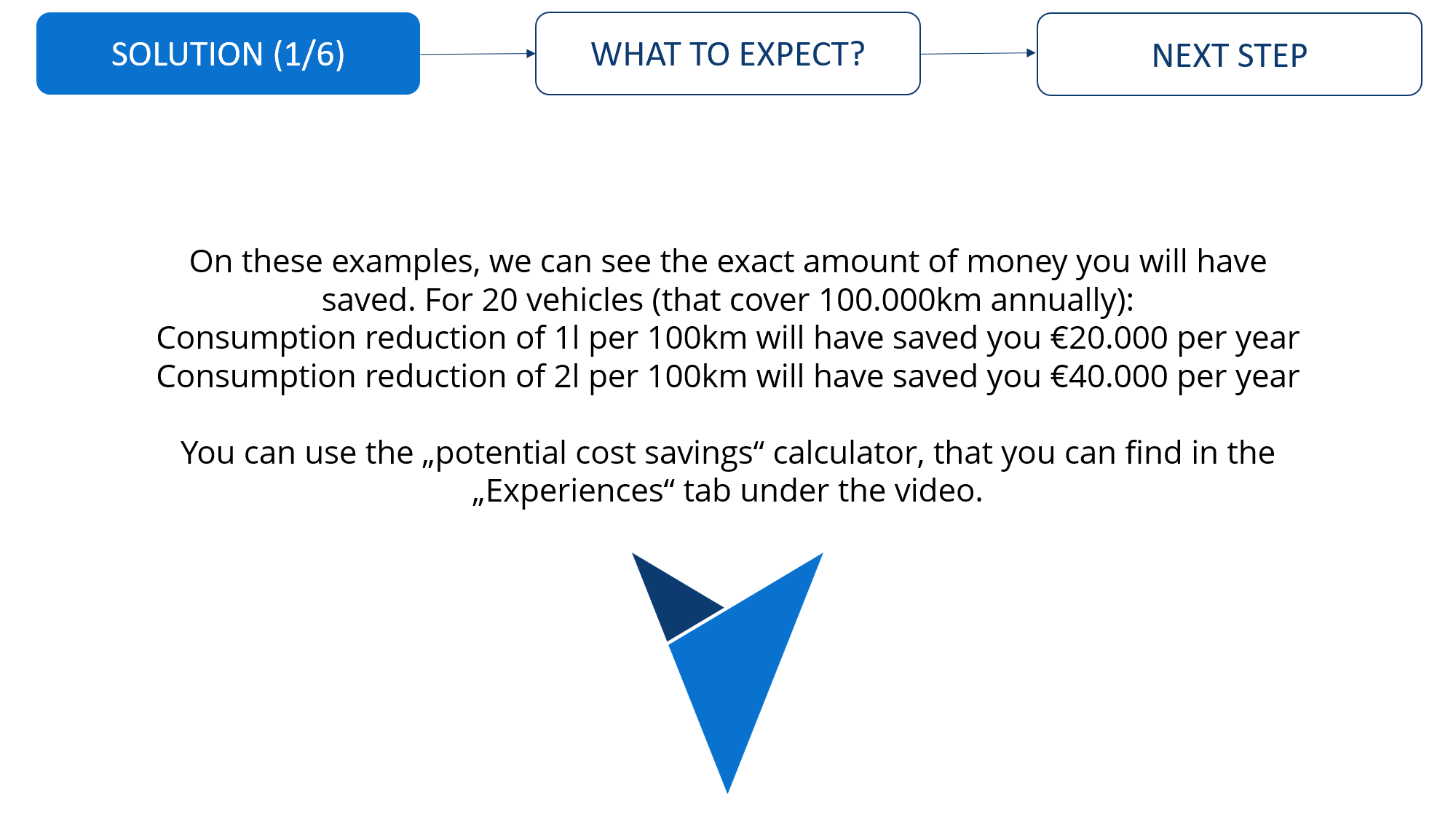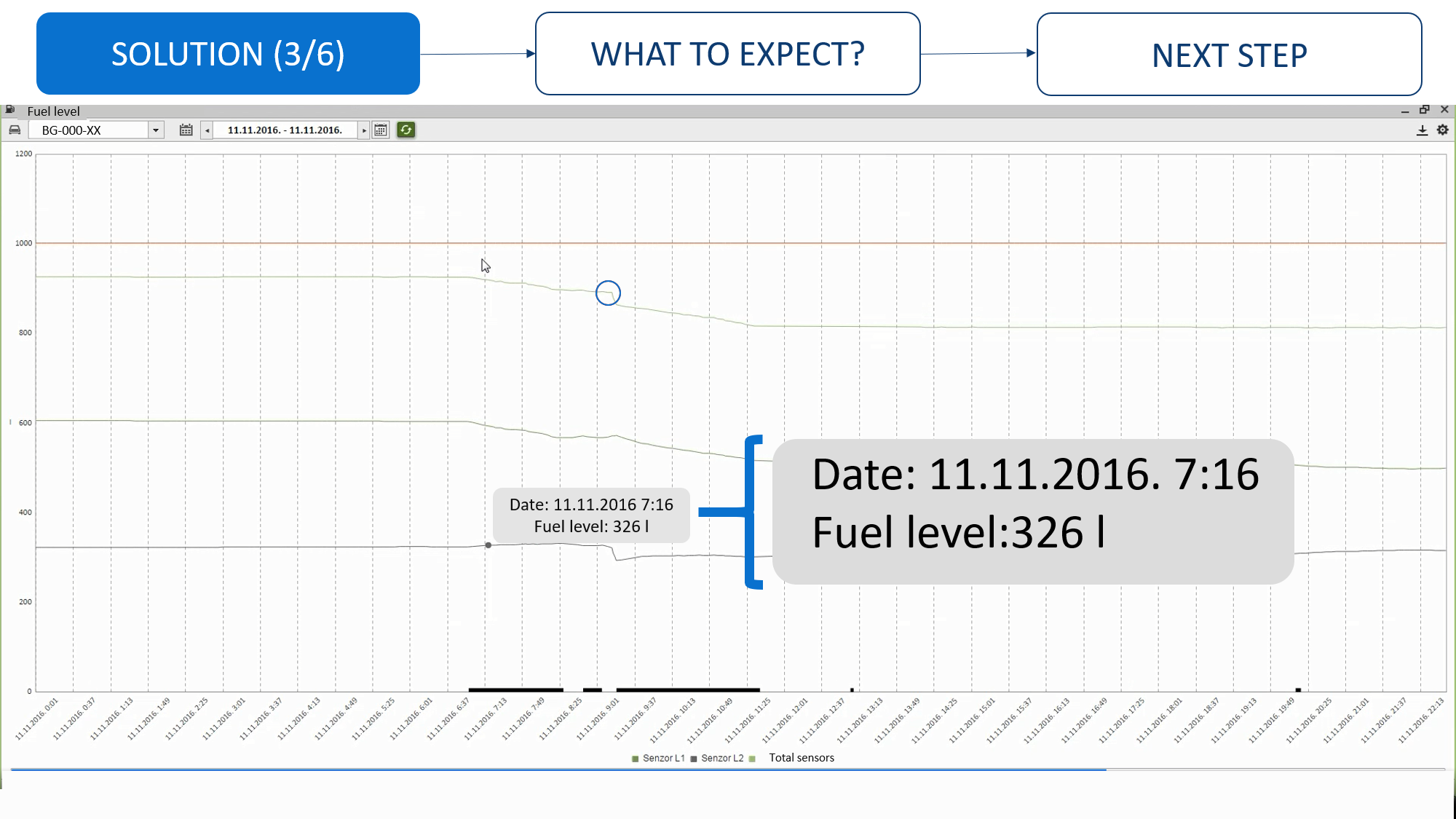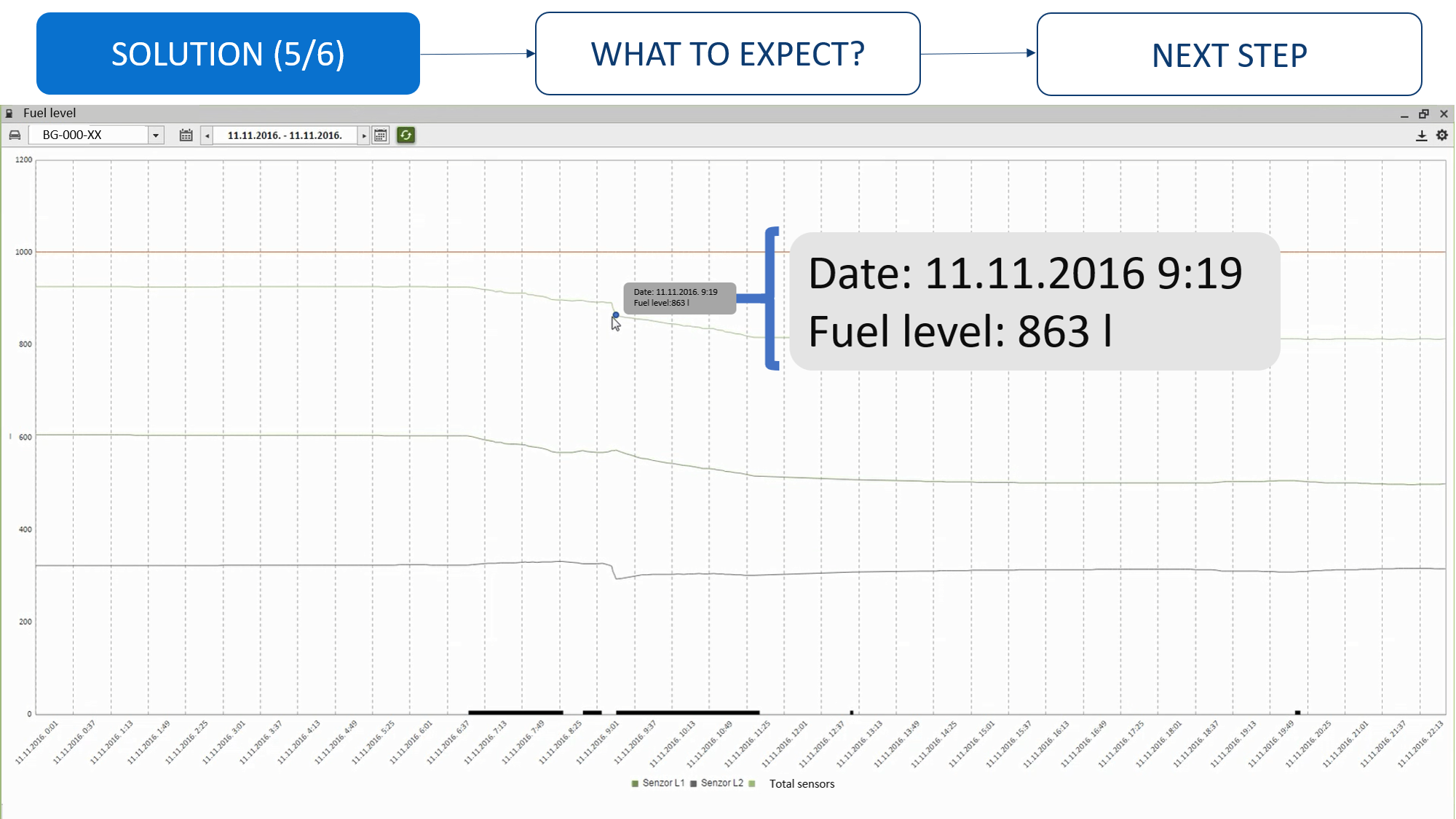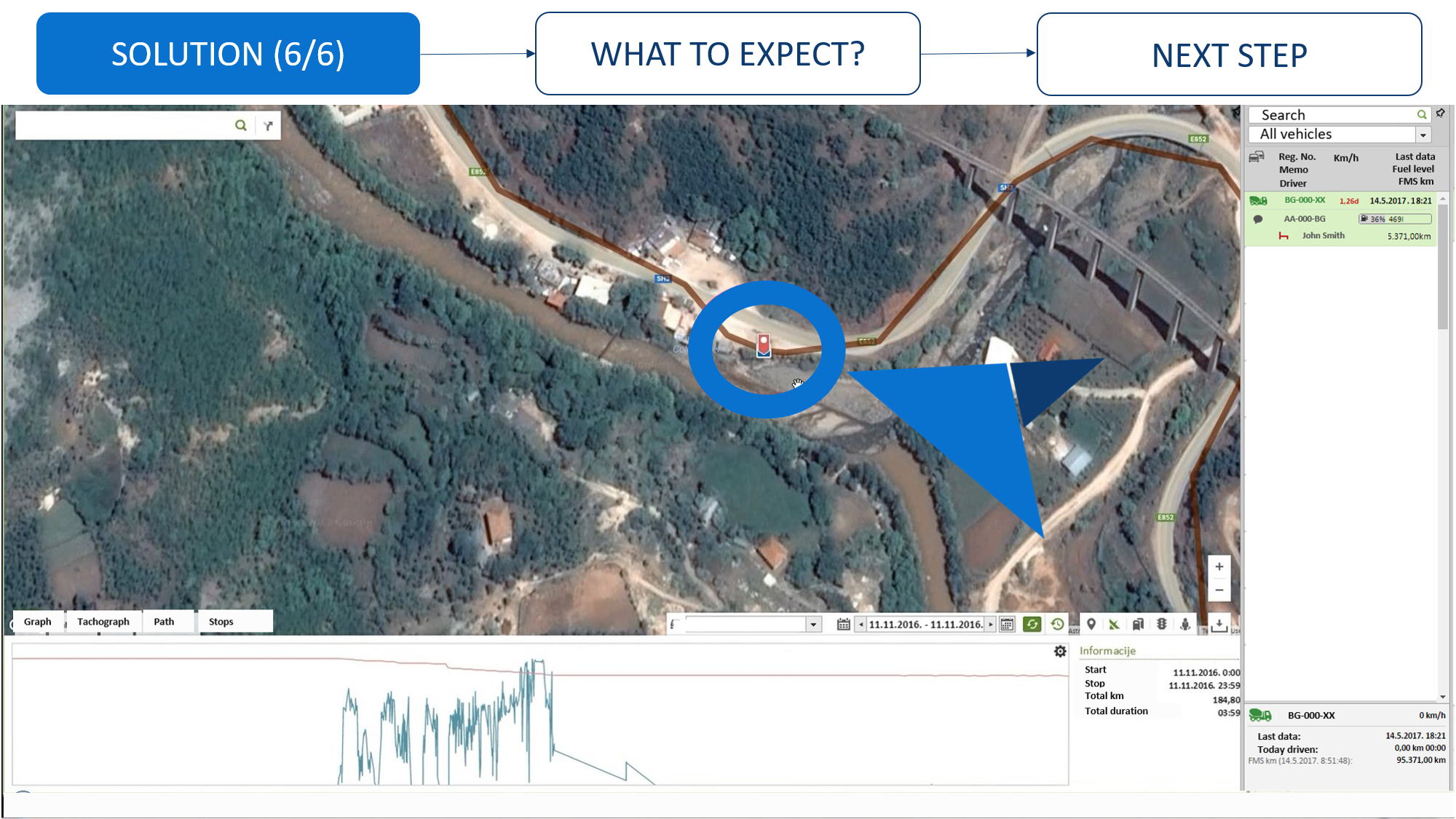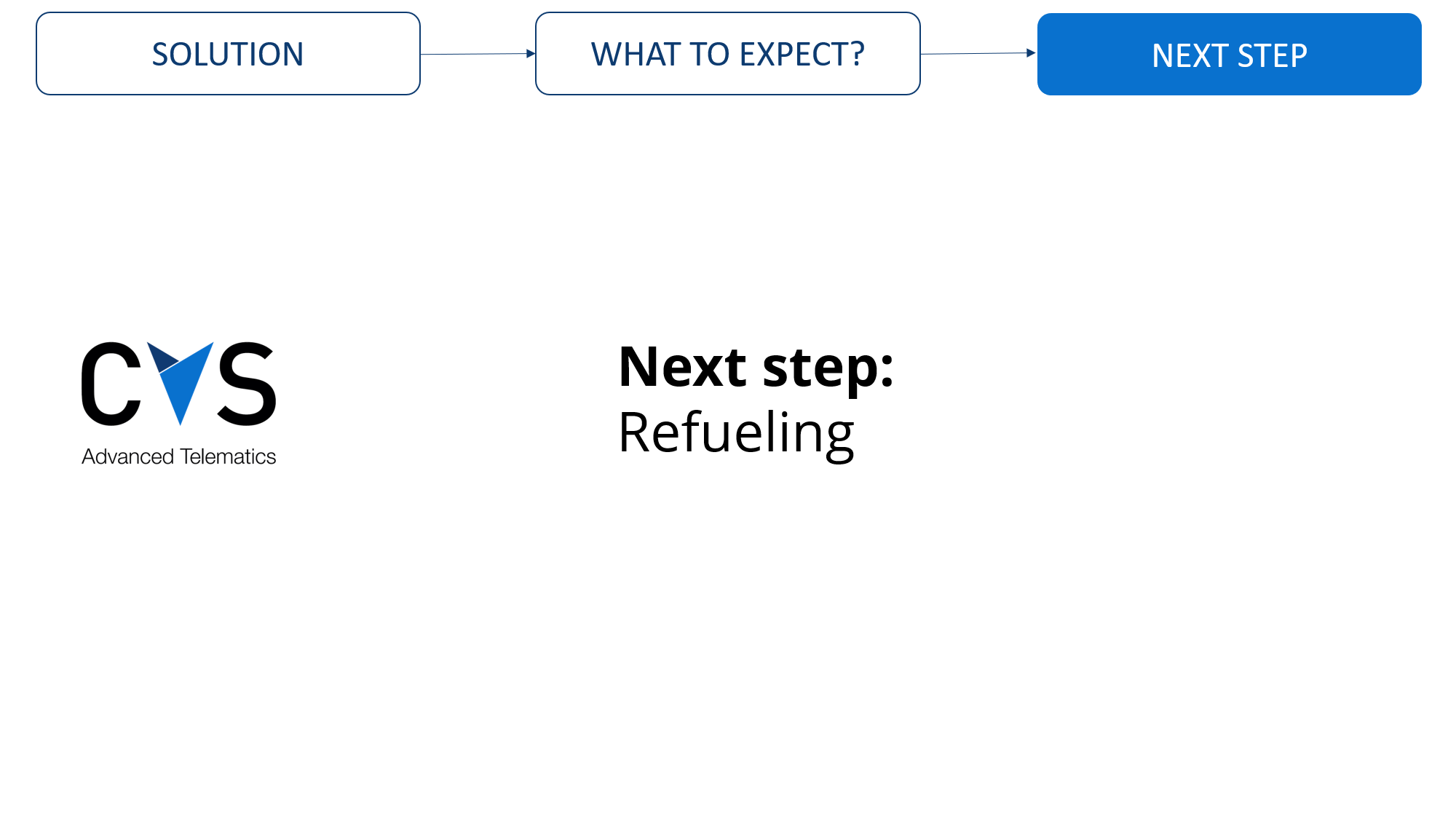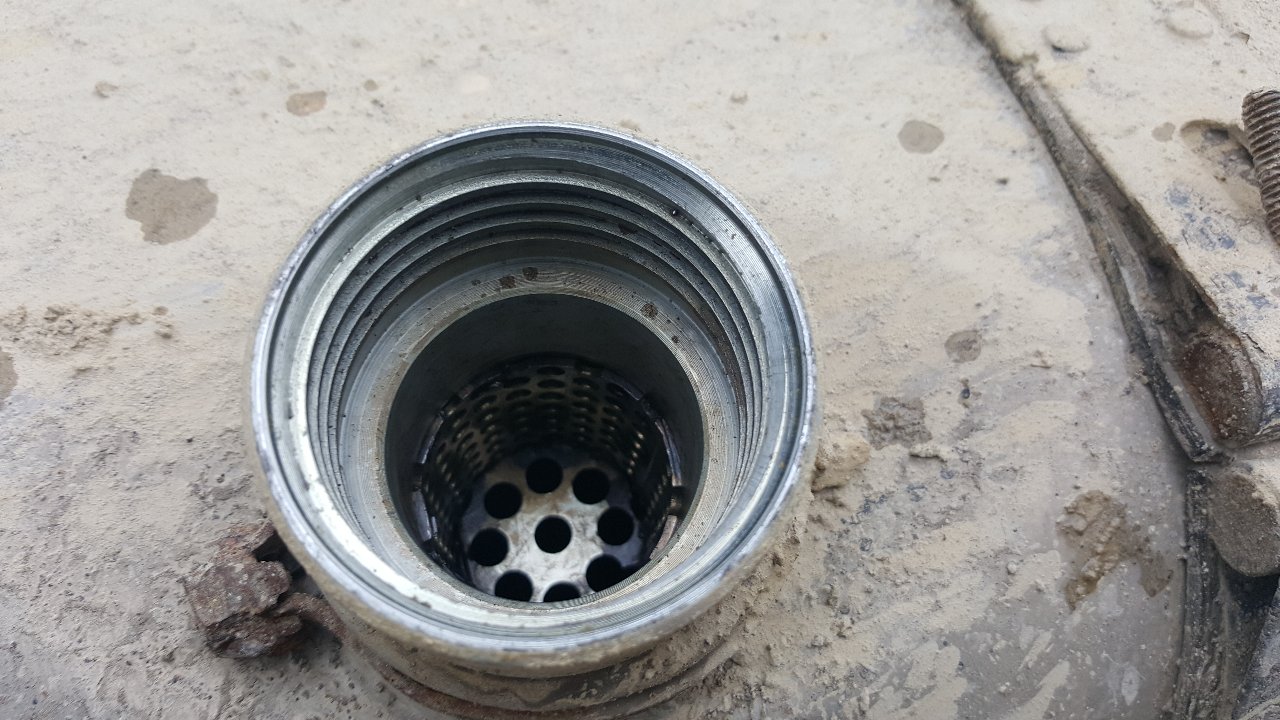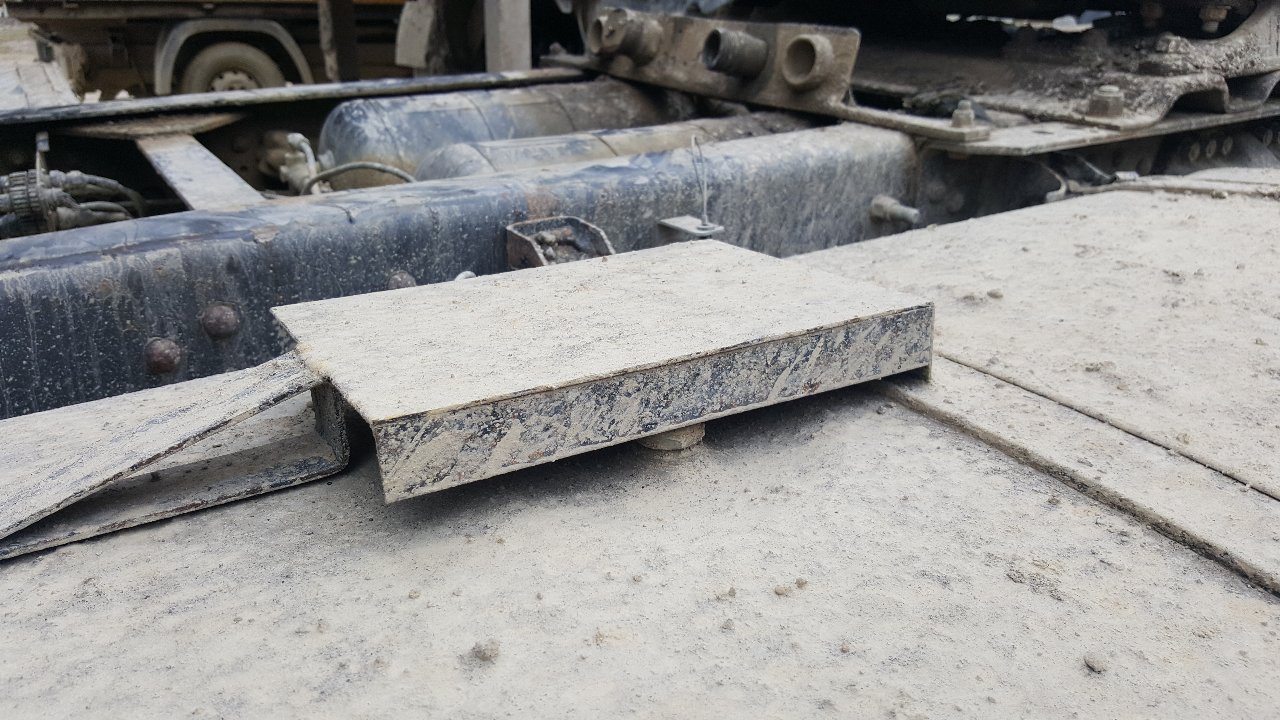Fuel theft example - FMS
How fuel theft can be discovered through the information retrieved from the FMS (the board computer of the vehicle). The accuracy of the data depends exclusively on the accuracy of the board computer, the CVS does not “create” that data, but rather it transfers it from the board computer to the application.Advanced FMS Fuel theft model
Fuel theft example and Alarm (Sensor)
How to discover fuel theft with the help of the probe for measuring fuel level. A useful option is the alarm for fueling/emptying fuel. The accuracy of the probe depends on multiple factors, experience has shown that the probe recognizes changes in the level of fuel in amounts of around 27-35 liters.Experiences
Potential cost savings
If we assume that a transport company has 20 vehicles and that those vehicles cover around 100.000km annually, the potential cost savings are:
- If the average consumption is reduced by 1l per 100km, the savings would amount to 20.000 EUR per year.
- If the average consumption is reduced by 2l per 100km, the savings would amount to 40.000 EUR per year.
Click the button below to download the cost savings calculator.
FMS data history
Vehicle weight
The information under FMS weight is related to the data on the weight that is created during the pressure in the airbags in the trailer (for MAN vehicles). For other vehicles, it is required to check with the manufacturer.
How many Km can the vehicle cover until the fuel level drops from 100% to 99%
When the fuel tank(s) are completely full, the vehicle can cover up to 440km (the distance is dependant on the vehicle) before the fuel level changes from 100% to 99% according to the FMS. That is because the vehicles integrated fuel level sensor doesn't cover the top few cm in the fuel tank(s).
Probe for measuring fuel level (Fuel Level Sensor) in the reservoir
Installation
During probe installation, the client is obliged to provide:
Full vehicle reservoirs (“top it up”)
A barrel (container) of 1.000 lit (can be from AdBlue)
A workshop that is covered and has electricity (220v)
Codes that can be used to set the alarm on the probe:
| Under E-mail/SMS you type in: | When the alarm arrives you get the info: |
| %AlarmName% | Name of the alarm |
| %NAME% | Vehicle registration number |
| %LOCATION% | Location name (location must be saved in mobileWEB before that) |
| %GPSLINK% | google maps link |
| %DATETIME% | Date and time when trigger occurred |
| %VALUE1% | How many litres have been poured in or out |
| %VehicleID% | ID of the Vehicle (modem) |
Fuel theft
In cooperation with our clients we chose some experiences that proved to be especially interesting and that every company that controls its fueling expenses should be familiar with.
Option 1: Siphoning fuel from the reservoir during breaks
The most common means of fuel theft is through siphoning from the reservoir during breaks. The reservoir lid is removed, the siphon dropped in and fuel is then removed from the reservoir.
Option 2: Inner tire
A deflated inner tire of a bicycle is dropped into the reservoir and then inflated, with the fuel level in the reservoir rising by the amount which the tire was inflated. Then fuel is poured into the reservoir, for instance 580 lit and 20 lit into a bucket on the side. Considering the inflated tire has a certain volume, the fuel level probe will show that around 600l was poured into the reservoir.
Before one starts driving, the valve on the tire that is in the reservoir is unscrewed just enough to let a little air out. While the vehicle is in motion the tire slowly deflates and the fuel level drops steadily. When the fuel probe report is checked, a moderate drop in fuel levels during the drive is seen, which is to be expected. That is why it is important to first calculate consumption “on paper”, because it takes into account all the fuel that the company had paid for and the kilometres that the vehicle had travelled.
Option 3: Return hose
For the reason that it is impossible to estimate how much fuel the engine needs, more fuel is always poured than the engine can consume. The fuel that is not is returned to the reservoir through the overflow hose. It is possible to connect the overflow hose to a fuel theft system. This system is made of a little electric pump that gets its power when it’s connected to the 12V power supply and pulls all the fuel that is returning from the engine to the reservoir through the overflow hose. This way, a small amount of fuel is stolen during driving. The fuel can is often put in the cabin under the bed or a similar place. That is why it is very difficult to discover. During one hour of driving, through the overflow hose, it is possible to steal around 15 - 20 lit of fuel. When taken into account that one trip is around 5.000km long, that is enough for a larger amount of fuel to be stolen. That is why it is important to first calculate consumption “on paper”, because it takes into account all the fuel that the company had paid for and the kilometres that the vehicle had travelled.
Option 4: The hose connecting two reservoirs (overflow hose)
The hose connecting two reservoirs is another way for fuel theft. It’s characteristic for being used to steal smaller amounts of fuel because vehicles during that time are usually motionless and it is easier to discover fuel misuse, which more experienced drivers know. That is why it is important to first calculate consumption “on paper”, because it takes into account all the fuel that the company had paid for and the kilometres that the vehicle had travelled.
Option 5: Interfering with the fuel level probe
Factory installed probes are easily removed and drivers use this when they wish to hide traces of fuel theft. This can be prevented by welding in the bar that stops the probe from being removed.
The CVS probe can also be interfered with through physical influences.
In the gallery you can view what a protective net looks like that is put in the reservoir, as well as the metal protection that stops the probe from being removed.
